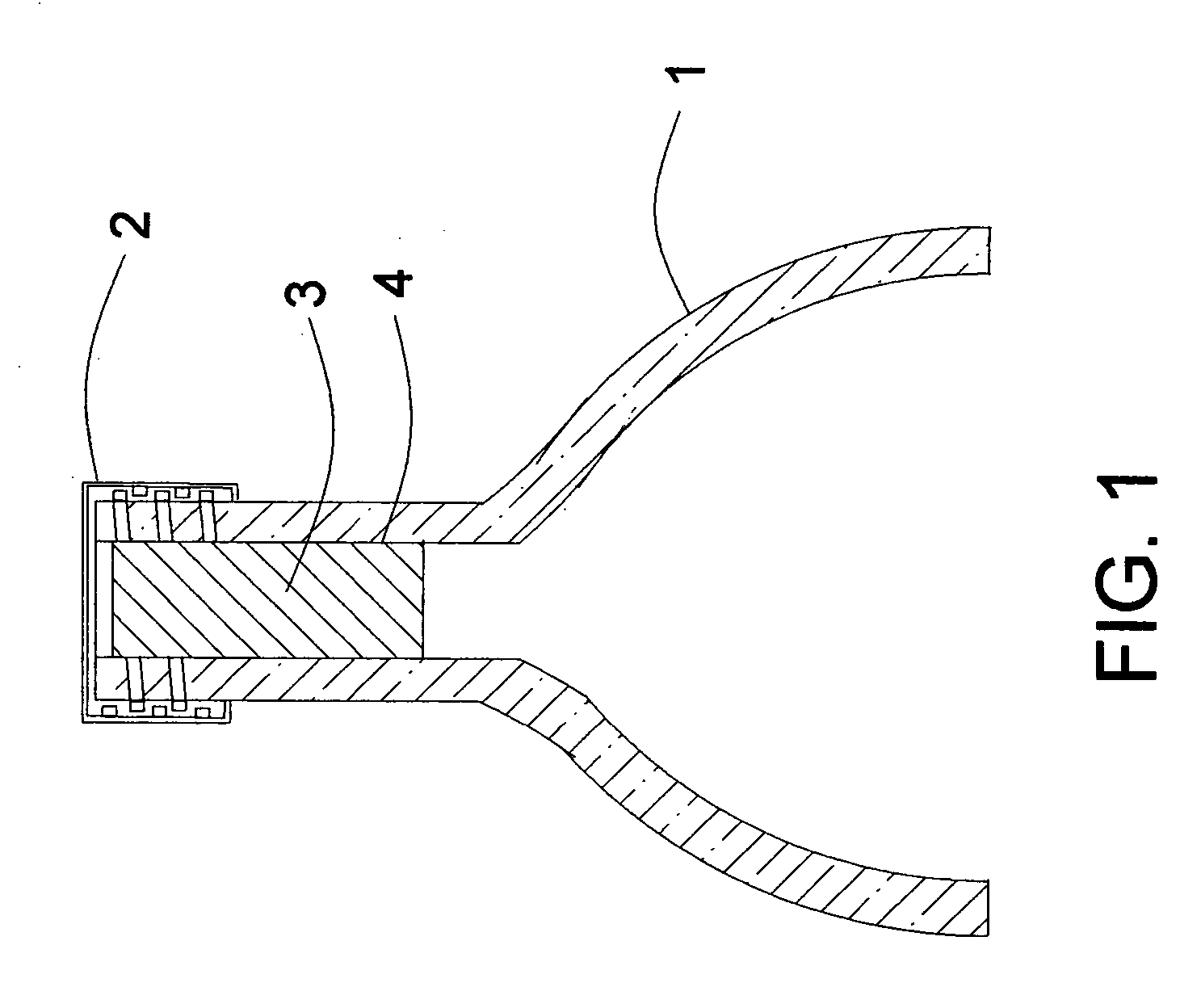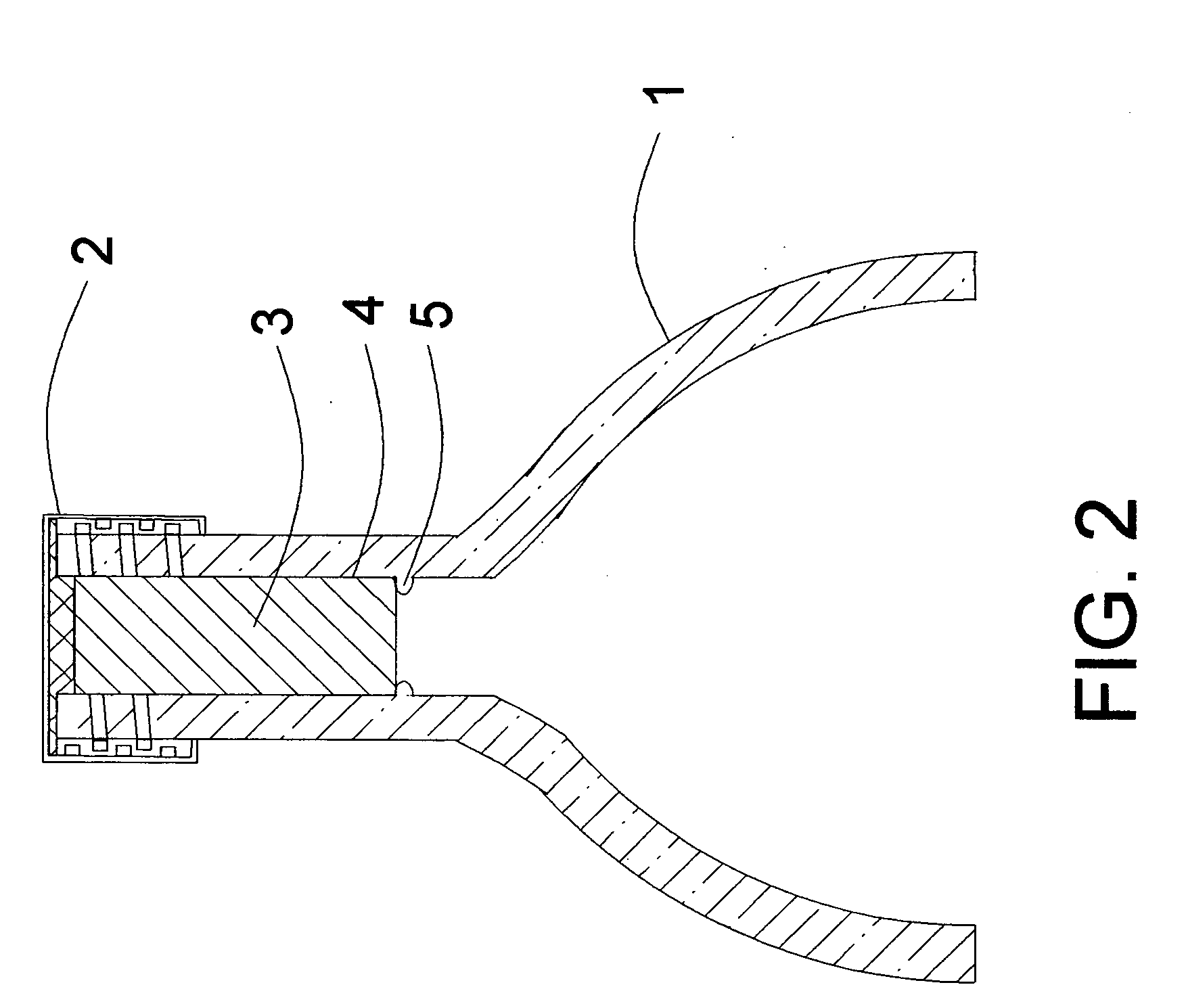Closable containers
a technology of trichloroanisole and containers, applied in the field of trichloroanisole closure containers, can solve the problems of significant economic losses, significant problems, and significant “corked” wine containing 2,4,6-trichloroanisole (tca) odor, and achieve the effect of easy manufacture and use and consumer acceptan
- Summary
- Abstract
- Description
- Claims
- Application Information
AI Technical Summary
Benefits of technology
Problems solved by technology
Method used
Image
Examples
Embodiment Construction
[0015]FIG. 1 shows part of a container body 1, which is a bottle. The bottle may be made of any one of the common materials used to make bottles including plastic (e.g. polycarbonate) and glass. The bottle may be filled with a number of consumable liquids, such as wine, brandy, sparkling cider, etc. The container comprises an axial bore 4 defining an opening for the container, a cylindrical stopper 3 within the bore, and a screw cap 2 for closing off the bore, wherein the cylindrical stopper is made of synthetic material. Examples of synthetic materials that may be used to make the cylindrical stopper include without limitation rubber or elastomer, e.g. silicone elastomer, preferably a foodstuffs grade silicone elastomer. Preferably, the cylindrical stopper 3 is of a diameter slightly larger than the diameter of the axial bore 4 and is compressed prior to insertion into the bore. Thus when the diameter of the axial bore 4 is 19 mm for a still wine or 17 mm for a sparkling wine, the ...
PUM
 Login to View More
Login to View More Abstract
Description
Claims
Application Information
 Login to View More
Login to View More - R&D
- Intellectual Property
- Life Sciences
- Materials
- Tech Scout
- Unparalleled Data Quality
- Higher Quality Content
- 60% Fewer Hallucinations
Browse by: Latest US Patents, China's latest patents, Technical Efficacy Thesaurus, Application Domain, Technology Topic, Popular Technical Reports.
© 2025 PatSnap. All rights reserved.Legal|Privacy policy|Modern Slavery Act Transparency Statement|Sitemap|About US| Contact US: help@patsnap.com



